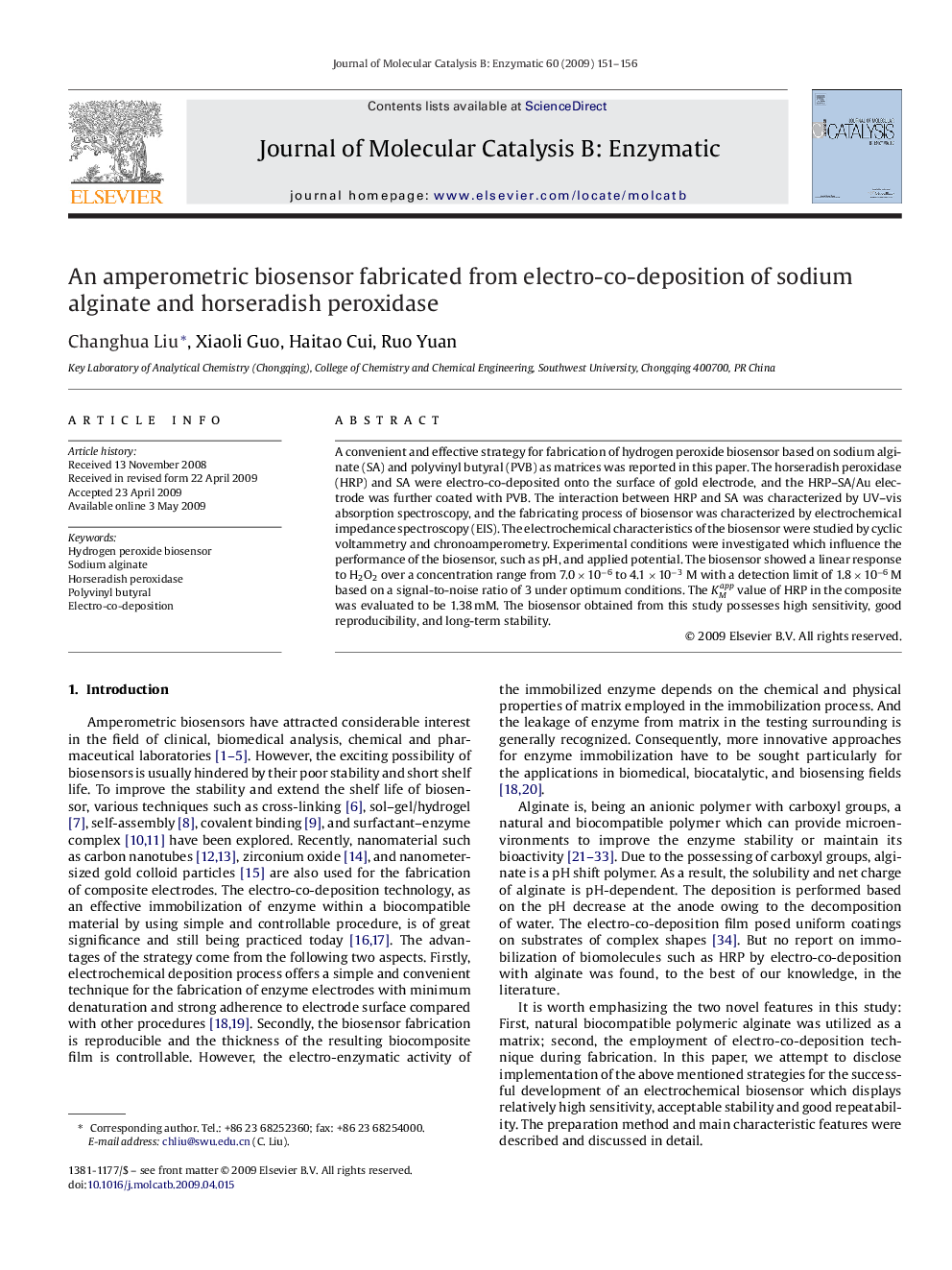| Article ID | Journal | Published Year | Pages | File Type |
|---|---|---|---|---|
| 70355 | Journal of Molecular Catalysis B: Enzymatic | 2009 | 6 Pages |
A convenient and effective strategy for fabrication of hydrogen peroxide biosensor based on sodium alginate (SA) and polyvinyl butyral (PVB) as matrices was reported in this paper. The horseradish peroxidase (HRP) and SA were electro-co-deposited onto the surface of gold electrode, and the HRP–SA/Au electrode was further coated with PVB. The interaction between HRP and SA was characterized by UV–vis absorption spectroscopy, and the fabricating process of biosensor was characterized by electrochemical impedance spectroscopy (EIS). The electrochemical characteristics of the biosensor were studied by cyclic voltammetry and chronoamperometry. Experimental conditions were investigated which influence the performance of the biosensor, such as pH, and applied potential. The biosensor showed a linear response to H2O2 over a concentration range from 7.0 × 10−6 to 4.1 × 10−3 M with a detection limit of 1.8 × 10−6 M based on a signal-to-noise ratio of 3 under optimum conditions. The KMapp value of HRP in the composite was evaluated to be 1.38 mM. The biosensor obtained from this study possesses high sensitivity, good reproducibility, and long-term stability.
